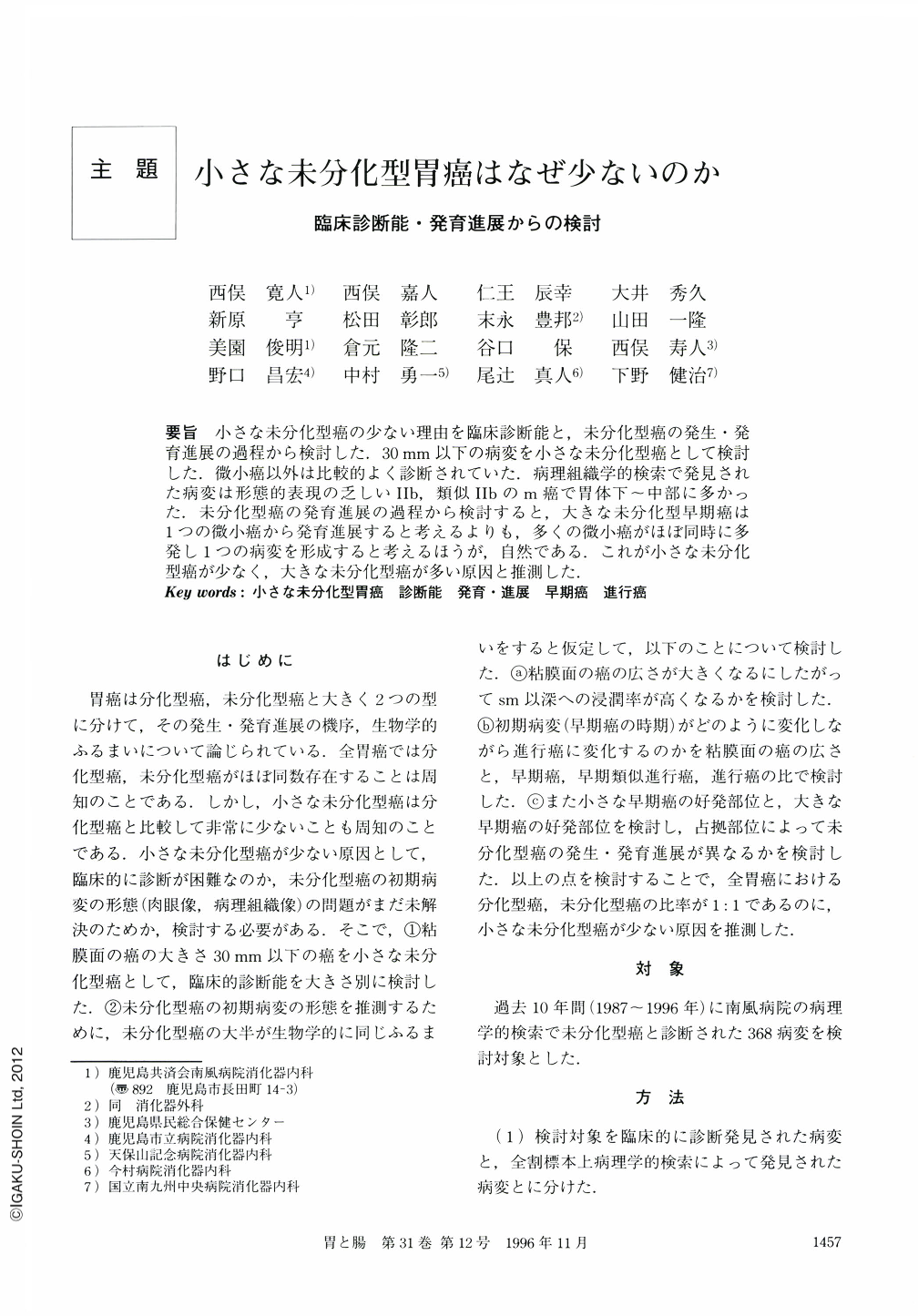Japanese
English
- 有料閲覧
- Abstract 文献概要
- 1ページ目 Look Inside
- サイト内被引用 Cited by
要旨 小さな未分化型癌の少ない理由を臨床診断能と,未分化型癌の発生・発育進展の過程から検討した.30mm以下の病変を小さな未分化型癌として検討した.微小癌以外は比較的よく診断されていた.病理組織学的検索で発見された病変は形態的表現の乏しいⅡb,類似Ⅱbのm癌で胃体下~中部に多かった.未分化型癌の発育進展の過程から検討すると,大きな未分化型早期癌は1つの微小癌から発育進展すると考えるよりも,多くの微小癌がほぼ同時に多発し1つの病変を形成すると考えるほうが,自然である.これが小さな未分化型癌が少なく,大きな未分化型癌が多い原因と推測した.
The reason why the small undifferentiated type gastric cancer was rare was estimated from the viewpoints of the ability of clinical detection and the generation and process of development of the undifferentiated type cancer. The small undifferentiated type cancer was designated as a lesion of 30 mm or less in size. The small cancer was relatively well detected except for the minute cancer. The lesions which were detected only by the histological examination were type IIb with nonspecific shape, or m cancer mimicking type IIb, and most of them were located in the middle to distal side of the gastric body. From the viewpoints of the developmental process of the undifferentiated type cancer, it may be natural to suppose that many minute cancer would develop simultaneously and from a lesion, instead of assuming that a single minute cancer would develop into a large undifferentiated early cancer. This assumption may explain the reason why a small undifferentiated type cancer is rare and a large one is common.

Copyright © 1996, Igaku-Shoin Ltd. All rights reserved.


